The Global Language of Techno
Techno, more than almost any other genre of electronic music, has achieved influence and global scale on a scale that is both vast and lasting. Sprung from the industrial heartlands of Detroit in the 1980s, techno has become a worldwide movement, reaching beyond all boundaries, languages, and cultures.
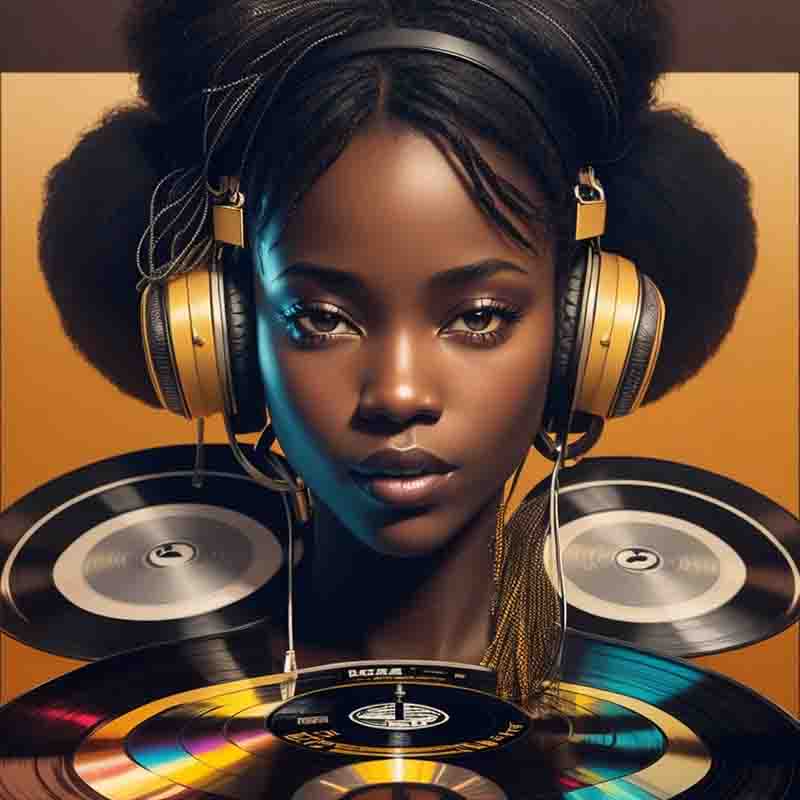
At its core, Techno is characterized by its relentless and repetitive beats, synthesized melodies, and the driving force that compels bodies to move in synchrony on the dancefloor.
Techno is a genre of electronic dance music that originated in Detroit in the late 1980s. It is characterized by its use of electronic instruments, synthesizers, and drum machines to create a repetitive and energetic sound.
Techno music history
The origins of Techno can be traced back to Detroit, Michigan, in the United States, a city known for its industrial landscape and the rise of automobile manufacturing.
It was in this urban setting that three young African American musicians and producers, Juan Atkins, Derrick May, and Kevin Saunderson, often referred to as the "Belleville Three," played a pivotal role in shaping the early sound of Techno.
Drawing inspiration from electronic German Krautrock pioneers such as Kraftwerk and funk artists like George Clinton, they began experimenting with synthesizers and drum machines to create a new, futuristic sound.
Today, Techno festivals and clubs can be found in virtually every corner of the world, from the underground scenes of Eastern Europe to the beach parties of Ibiza .
Techno's global impact is undeniable. While it originated in Detroit, it quickly spread to Europe, particularly Berlin, where it found a new home and became a dominant force in the city's nightlife.
Detroit's Post-Industrial Techno Influence
One cannot discuss the origins of Techno without acknowledging the impact of Detroit's post-industrial landscape.
The city's abandoned factories and warehouses became the breeding grounds for counter culture underground parties and raves, providing a unique backdrop for Techno's emergence.
The sense of desolation and the yearning for renewal were channeled into the music, creating a futuristic and often dystopian sound.
The first significant milestone in the history of Techno was the release of Juan Atkins' track "Clear"under the moniker Cybotron in 1983.
This groundbreaking composition featured pulsating electronic rhythms and synthesized melodies, setting the stage for what would become the Techno genre.
Shortly thereafter, Derrick May's classic "Nude Photo" and Kevin Saunderson's "Triangle of Love" further solidified Techno's emergence as a distinct musical genre.
As Techno continued to evolve, it began to gain recognition beyond Detroit's borders.
One of the genre's defining moments came in 1987 with the release of "Strings of Life" by Derrick May, which not only became an anthem in Detroit but also crossed over to European dance floors.
This marked the beginning of Techno's global reach, and it soon found a home in the burgeoning rave and club scenes of Europe.
Techno: A Universal Language of Rhythm
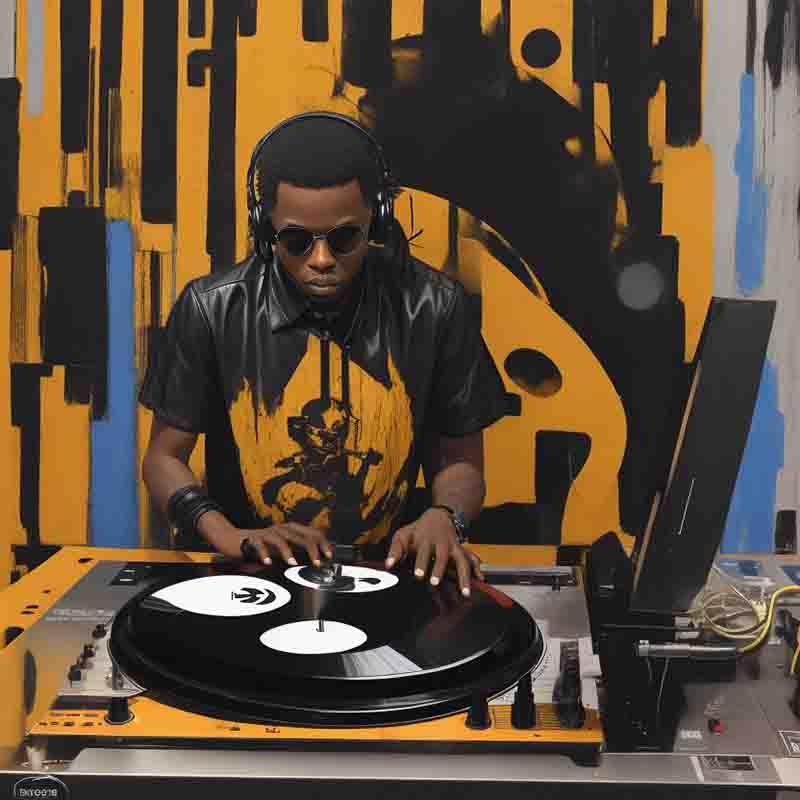
While Techno has undoubtedly made its mark on mainstream music and culture, its roots and heart remain firmly entrenched in the underground.
In the late 1980s and early 1990s, Techno music underwent a rapid evolution, giving rise to various subgenres.
Detroit Techno remained true to its industrial and futuristic roots, while other styles like Acid Techno, characterized by its squelchy and hypnotic basslines, and Ambient Techno, which explored more ethereal and atmospheric soundscapes, began to emerge.
Berlin, in particular, played a crucial role in the international spread of Techno, with clubs like Tresor and Berghain becoming legendary hubs for Techno enthusiasts.
Another significant milestone came in 1988 with the release of "Techno! The New Dance Sound of Detroit," a compilation album that introduced the world to the Detroit Techno sound and the artists behind it.
This compilation helped establish Techno as a global movement, inspiring countless producers and DJs worldwide.
The 1990s saw Techno music diversify even further, with artists like Jeff Mills, Richie Hawtin, and Carl Craig pushing the boundaries of the genre.
Techno became synonymous with innovation in electronic music production, as artists embraced cutting-edge technologies and experimentation in their work.
Today, Techno music continues to thrive, with a global community of artists, producers, and fans who celebrate its diverse subgenres and the genre's ability to transcend cultural and geographic boundaries.
Techno festivals like the Fusion Festival in Mecklenburg-Vorpommern, in northeastern Germany, Awakenings in the Netherlands and Movement in Detroit draw massive crowds, showcasing the enduring appeal of this electronic music genre.
The history of Techno music is a story of innovation, cultural influence, and sonic exploration.
From its humble beginnings in the industrial landscape of Detroit to its status as a worldwide phenomenon, Techno has left an indelible mark on the music industry and continues to evolve, adapt, and inspire new generations of electronic music enthusiasts.
Iconic Techno tracks
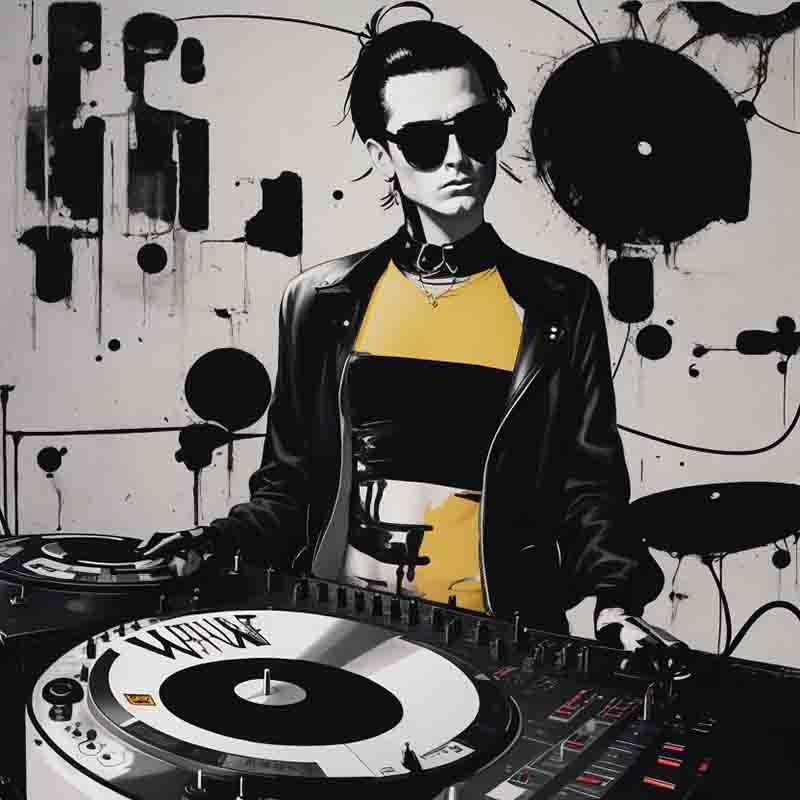
One of the defining features of the Techno underground scene is its inclusivity. It's a space where people of diverse backgrounds, orientations, and identities come together to celebrate music and freedom.
Iconic Techno tracks have played a pivotal role in shaping the genre's history and influencing countless artists and enthusiasts worldwide.
Here, we'll showcase a selection of tracks that have left a significant mark on Techno, offering insights into their production and their lasting impact
-
Jeff Mills - "The Bells" (1997): "The Bells" is a masterpiece of minimalism, featuring a hypnotic, repetitive melody played on a Roland TB-303 synthesizer. Its rhythmic complexity is achieved through intricate programming and layering of percussive elements. This track is often considered an anthem of Detroit Techno. Its timeless quality and ability to captivate dancefloors make it an enduring favorite among Techno enthusiasts.
-
Joey Beltram - "Energy Flash" (1990): "Energy Flash" is characterized by its aggressive and high-energy approach, featuring a thunderous kick drum, rapid hi-hats, and a haunting synth riff. The track's use of sampling and loop manipulation was groundbreaking for its time. Widely regarded as one of the pioneering tracks of Techno, "Energy Flash" exemplifies the genre's early evolution and remains an essential reference point for its history.
-
Underworld - "Born Slippy"(1995): This track combines elements of Techno with progressive and trance influences. It features a pulsating beat, ethereal synths, and Karl Hyde's distinctive vocals. The use of Roland TB-303 and Juno-106 synthesizers creates a rich sonic landscape. "Born Slippy .NUXX" gained global recognition when featured in the film "Trainspotting." It introduced Techno to a broader audience and solidified Underworld's status as electronic music pioneers.
-
Richie Hawtin - "Spastik" (1993): "Spastik" is a Minimal Techno classic. It revolves around a relentless drum pattern and a minimalistic synth sequence created using the Roland TR-909 drum machine and a Yamaha DX100 synthesizer. Its simplicity and hypnotic groove are signature elements. Richie Hawtin's "Spastik" is celebrated for its influential role in the development of Minimal Techno. Its stark, stripped-down approach set the template for many future Minimal tracks.
-
Laurent Garnier - "Crispy Bacon" (1997): "Crispy Bacon" combines Techno with elements of acid and breakbeat. The track features a distinctive distorted bassline and frenetic drum programming. It's known for its quirky sampling, including vocal snippets and the iconic "Crispy Bacon" phrase. Laurent Garnier's eclectic approach in "Crispy Bacon" demonstrates Techno's versatility and willingness to experiment with diverse sounds and styles.
-
Juan Atkins - "Techno City" (1984): As one of the pioneers of Techno, Juan Atkins created "Techno City" using early drum machines and synthesizers. Its futuristic sound, syncopated rhythms, and Kraftwerk-inspired melodies laid the foundation for the entire genre. "Techno City" is often considered one of the very first Techno tracks, making Juan Atkins a foundational figure in the genre's history.
These iconic Techno tracks have not only left an indelible mark on the genre but have also contributed to the evolution of electronic music as a whole. They continue to inspire new generations of producers, DJs, and fans, reminding us of the genre's rich history and enduring appeal on dancefloors worldwide.
The Techno Sound: An Immersive Sonic Experience
At its essence, Techno music is characterized by a unique and immersive sonic landscape that distinguishes it from other electronic music genres.
The Techno sound is a sonic journey that takes listeners on a hypnotic ride through the fusion of rhythmic beats, synthesized melodies, and an overall futuristic atmosphere.
Let's break down the key elements that contribute to the distinctive Techno sound.
Repetitive Beats and Rhythms

Techno is a genre that continually evolves while staying true to its roots, reminding us that the future of music is a limitless horizon of sonic exploration.
At the heart of Techno are its repetitive and relentless four to the floor beats. These beats serve as the driving force that propels the music forward, creating an irresistible urge to move on the dancefloor.
The drum patterns in Techno are often straightforward but meticulously crafted, with a focus on crisp hi-hats, punchy kicks, and snappy snares.
The rhythmic precision of Techno sets it apart, creating a mesmerizing and trance-inducing quality.
Synthesized Soundscapes
Synthesizers play a pivotal role in shaping the Techno sound. They produce a wide range of electronic and futuristic sounds that define the genre.
The iconic Roland TB-303 and SH-101 synthesizers, for example, have left an indelible mark on Techno, giving birth to the signature "acid" sounds and squelchy basslines.
Synthesized melodies and textures are often layered, creating rich and complex soundscapes that captivate listeners.
Minimalism and Space
Techno's allure often lies in its minimalistic approach. The genre embraces the concept of "less is more," allowing individual elements to breathe and evolve over time.
Minimal Techno, a subgenre, takes this concept to the extreme with sparse arrangements and a focus on subtlety and repetition.
The use of space and silence is a crucial aspect of the Techno sound, creating tension and anticipation in the music.
Emotion and Atmosphere
Despite its mechanical and electronic nature, Techno is far from emotionless. The genre has the power to evoke a wide range of feelings, from euphoria to introspection.
Techno's ability to create an otherworldly atmosphere contributes to its appeal. It often feels like a sonic journey into the unknown, inviting listeners to lose themselves in the music.
Sonic Experimentation
Techno artists are known for their sonic experimentation. They push the boundaries of sound design, constantly seeking new and innovative ways to create unique auditory experiences.
The genre welcomes unconventional sounds and textures, embracing the unexpected and the avant-garde.
Dancefloor Energy
Techno's primary purpose is to ignite the dancefloor. Its repetitive and driving beats create an infectious energy that unites clubgoers in a collective groove.
DJs often use Techno's rhythmic precision to build tension and release it through carefully timed drops and transitions, keeping the crowd in a state of constant motion.
The genre's ability to maintain a high-energy yet hypnotic atmosphere makes it a favorite in clubs and festivals around the world.
Evolution and Adaptation
The Techno sound is ever-evolving. While it retains its core elements, it has the flexibility to adapt to changing tastes and technologies.
Subgenres like Acid Techno, Dub Techno, and Minimal Techno each bring their own sonic variations and moods, showcasing Techno's adaptability.
Techno artists continually experiment with sound design, incorporating new technologies and production techniques to push the boundaries of the genre.
Cross-Genre Influences
Techno's influence extends beyond its own borders. It has inspired and been influenced by various music genres, including trance, house, and industrial music.
This cross-pollination of musical ideas has led to the creation of hybrid subgenres, further enriching the Techno sonic palette.
Universality and Timelessness
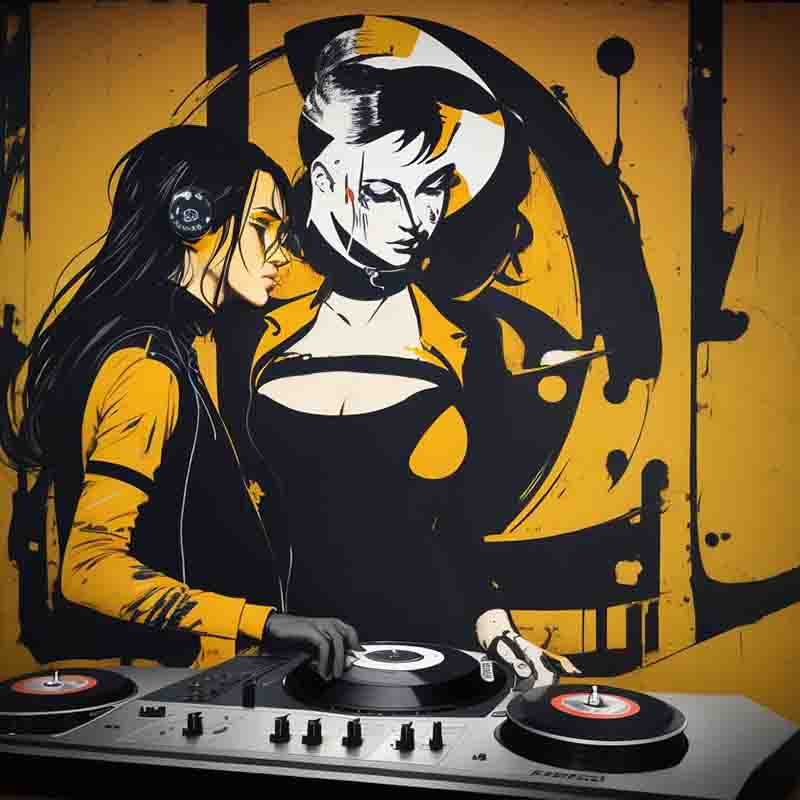
Techno is also known for its inclusivity and sense of community. The dancefloor becomes a place of unity, where people from all walks of life come together to celebrate music and freedom of expression.
The Techno sound is universal and timeless. Its simplicity and raw power resonate with audiences of all backgrounds and generations.
Tracks that were produced decades ago can still pack dancefloors and evoke the same energy and emotion as when they were first heard.
The Techno sound is a multi-faceted sonic experience that combines repetitive beats, synthesized soundscapes, minimalism, and an emotional atmosphere to create a genre that is both captivating and transformative.
Its ability to transcend boundaries, adapt to changing times, and inspire innovation has solidified its place as a global phenomenon that continues to shape the landscape of electronic music.
Whether you're a seasoned Techno enthusiast or a newcomer, the allure of the Techno sound is an invitation to explore and immerse yourself in its unique sonic universe.
Techno subgenres
Whether you're into the hypnotic minimalism of Minimal Techno or the frenetic energy of Acid Techno, there's a Techno subgenre to suit every sonic preference.
-
Minimal Techno:
-
Characteristics: Minimal Techno is defined by its stripped-down, minimalist approach. It often features sparse arrangements with a focus on simplicity and repetition.
-
Sound: Minimal Techno tracks typically include minimal percussion, subtle basslines, and minimalistic melodies. The use of space and silence is a key element, creating a hypnotic and meditative quality.
-
Artists: Prominent artists in Minimal Techno include Richie Hawtin, Ricardo Villalobos, and Magda.
-
Acid Techno:
-
Characteristics: Acid Techno is known for its distinctive squelchy and resonant sounds created by the Roland TB-303 synthesizer. It has a psychedelic and hypnotic quality.
-
Sound: The iconic "acid" sound is characterized by resonating basslines and bubbly, twisting synth lines. It's often energetic and dancefloor-focused.
-
Artists: Acid Techno pioneers like Phuture and DJ Pierre laid the foundation for this subgenre. Modern artists like Chris Liebing and Hardfloor continue to explore its possibilities.
-
Dub Techno:
-
Characteristics: Dub Techno fuses elements of Techno with the spaciousness and echo effects of dub music. It has a deep and immersive quality.
-
Sound: Dub Techno is marked by reverberating and delayed sounds, creating a sense of depth and expansiveness. It often features dub-influenced percussion and minimal vocals.
-
Artists: Pioneers of Dub Techno include Basic Channel and Maurizio. Modern artists like Moritz von Oswald and Deepchord continue to shape the subgenre.
-
Industrial Techno:
-
Characteristics: Industrial Techno draws inspiration from industrial and post-industrial environments, resulting in a dark and gritty sound.
-
Sound: It features harsh and distorted sounds, metallic percussion, and a sense of mechanical urgency. The atmosphere is often dystopian and intense.
-
Artists: Artists like Adam X, Ancient Methods, and Paula Temple are known for their contributions to Industrial Techno.
-
Tech House (Techno-House Fusion):
-
Characteristics: Tech House combines elements of Techno and House music, resulting in a groove-oriented and accessible style.
-
Sound: It features four-on-the-floor beats, funky basslines, and a balance between the energy of Techno and the groove of House. It's often a favorite in club settings.
-
Artists: Tech House artists include Carl Cox, Green Velvet, and Hot Since 82.
-
Ambient Techno:
-
Characteristics: Ambient Techno blends Techno's rhythmic elements with the soothing and atmospheric qualities of ambient music.
-
Sound: It often features slower tempos, lush synth pads, and a dreamy, ethereal atmosphere. It's ideal for introspection and relaxation.
-
Artists: Aphex Twin, The Orb, and Biosphere have created influential Ambient Techno tracks.
-
Hard Techno:
-
Characteristics: Hard Techno is characterized by its high tempo and intense, pounding beats. It's designed for energetic and relentless dancefloor experiences.
-
Sound: It features aggressive percussion, distorted kicks, and a fast pace. It's a favorite in underground and hardcore Techno scenes.
-
Artists: Sven Wittekind, Chris Liebing, and DJ Rush are known for their Hard Techno productions.
-
EBM (Electronic Body Music):
-
Characteristics: EBM is a fusion of Techno and industrial music, known for its danceable yet aggressive sound.
-
Sound: It often includes powerful beats, repetitive basslines, and shouted vocals. EBM has a raw and rebellious energy.
-
Artists: Front 242, Nitzer Ebb, and D.A.F. are pioneers of EBM.
These Techno subgenres showcase the genre's versatility and ability to evolve over time. Each subgenre caters to different moods, tastes, and dancefloor experiences, contributing to the rich tapestry of Techno music.
The Global Impact of Techno: A Sonic Odyssey
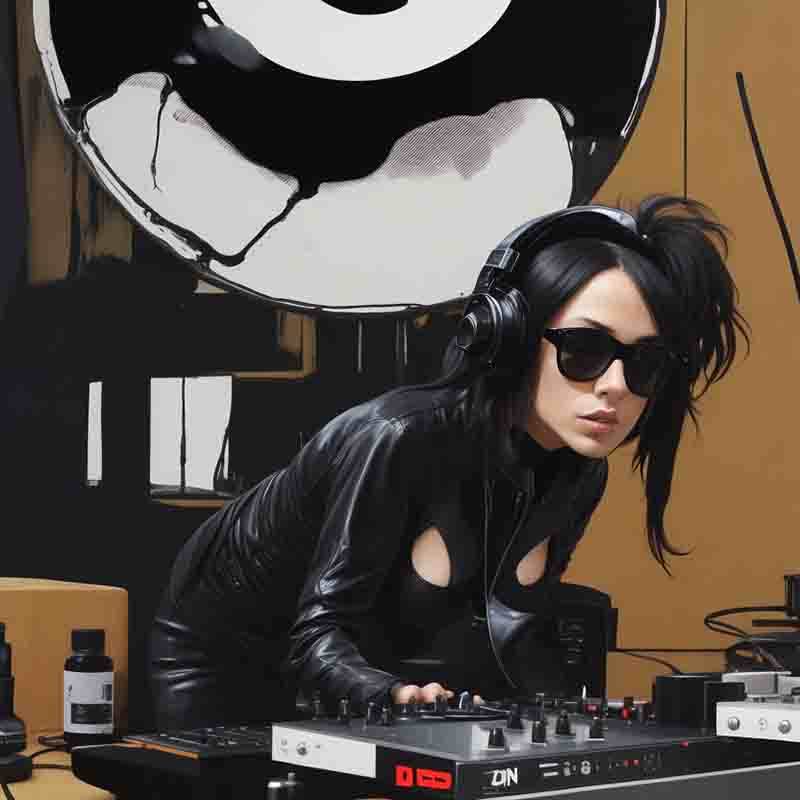
Techno is more than just music; it's a culture that shapes fashion, art, and lifestyle. The visual aesthetic of Techno often reflects its futuristic and avant-garde nature.
Techno music's journey from its birthplace in Detroit, Michigan, to its far-reaching influence on the global stage is nothing short of a sonic odyssey.
Here's an in-depth look at how Techno has shaped electronic dance culture worldwide:
Techno Takes Flight
Techno music first made its mark in the underground clubs of Detroit in the 1980s. However, its innovative sounds and futuristic beats soon transcended geographical boundaries.
In the late 1980s and early 1990s, Techno found its way to Europe, particularly in cities like Berlin and Frankfurt, where it ignited a passion for electronic dance music that still burns brightly today.
Birth of the Berlin Techno Scene
Berlin, in particular, became a Techno epicenter. The fall of the Berlin Wall in 1989 created a unique atmosphere of artistic freedom and reinvention, paving the way for a vibrant Techno scene.
Clubs like Tresor, Berghain, and Watergate became legendary hubs for Techno enthusiasts, drawing artists and ravers from around the world.
Global Techno Festivals
Techno festivals have become a global phenomenon. Events like Movement in Detroit, Time Warp in Mannheim, and Awakenings in Amsterdam have achieved international acclaim.
These festivals serve as a gathering point for Techno aficionados and showcase a diverse lineup of artists, both established and emerging.
Techno in Latin America
Latin America has embraced Techno with fervor. Cities like Buenos Aires, Mexico City, and São Paulo have burgeoning Techno scenes, hosting world-class events.
The region's passion for the genre has produced a crop of talented local artists who contribute to the global Techno landscape.
Asia's Techno Awakening
Asia, too, has witnessed a surge in Techno's popularity. Tokyo, Seoul, and Bangkok have thriving Techno communities, with dedicated clubs and events.
The region's adoption of Techno reflects its universal appeal and adaptability across cultures.
Techno's Message of Unity
Techno music's repetitive beats and inclusive ethos serve as a unifying force. It brings together people of all backgrounds, languages, and cultures on dancefloors worldwide.
The genre's global impact extends beyond music; it fosters a sense of shared experience and unity.
Techno's Role in Electronic Dance Culture
Techno has played a pivotal role in the broader electronic dance culture. It has influenced other genres like house, trance, and drum and bass, contributing to their evolution.
The underground ethos of Techno has inspired a DIY spirit and an emphasis on artistic integrity in electronic music production.
Techno as a Sonic Revolution
Techno's innovative spirit continues to drive the genre forward. It embraces technological advancements, AI integration, and avant-garde experimentation.
Techno artists often serve as sonic pioneers, pushing the boundaries of sound and redefining the possibilities of electronic music.
Techno's global impact
Techno's global impact is a testament to its universal appeal and enduring relevance. It has transcended borders, languages, and generations to become a unifying force in electronic dance culture.
From its origins in Detroit's underground to the stages of festivals around the world, Techno's hypnotic beats and futuristic sounds continue to shape the way we experience music, dance, and artistic expression on a global scale.
Techno's success lies in its capacity to communicate across borders and languages. It has become a universal language of rhythm, drawing together people from all walks of life
Beyond its dancefloor appeal, Techno has consistently been at the vanguard of musical innovation. Artists and producers continue to experiment with sound design, embracing technology to shape the genre's future.
As we look ahead, Techno's future remains as exciting as its past. The genre continues to push the boundaries of sound, embracing new technologies, and championing sonic experimentation
Techno: FAQ
Are you curious about music, art, technology, fashion, lifestyle, and beer?
If so, then you need to subscribe to the free Likewolf newsletter.
100% privacy. When you sign up, we'll keep you posted.
Dive Deeper into the Rhythm
Capture the Passion and Energy of House Music
